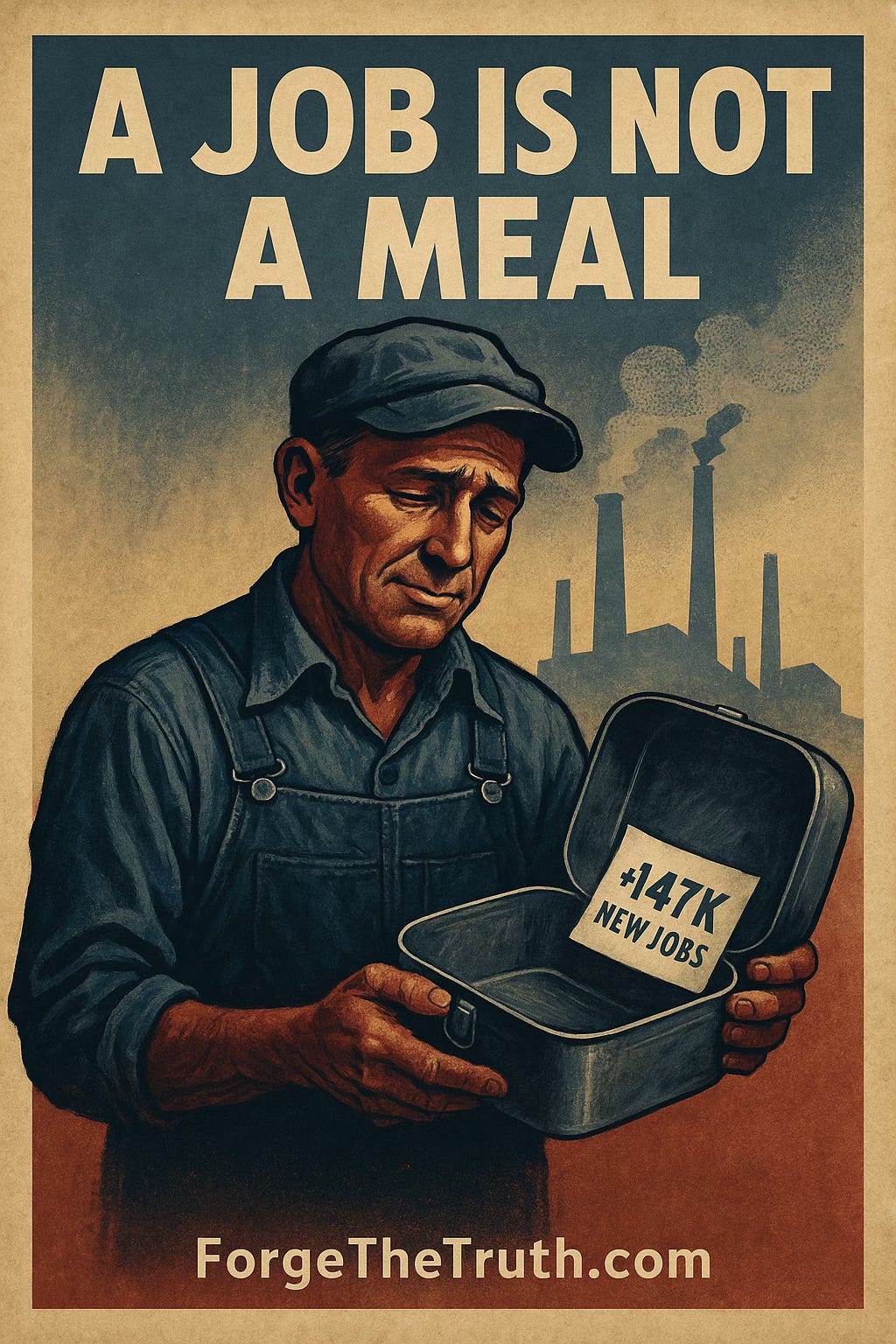Akron, Ohio, July 9 2025
A human moment
Miguel R., a forty-nine-year-old tool-and-die specialist in Ohio, finally landed full-time factory work again. Yet on his first Friday lunch break he opened a dented metal pail and found only coffee and a single apple. Groceries have climbed faster than his pay, so real meals stay home. The government says 147 000 new jobs bloomed in June, but Miguel still tastes scarcity.
What the numbers actually show
+147 000 total non-farm payroll jobs. More than half (about +73 000) came from state and local government classrooms and offices. Private employers added roughly +74 000. oai_citation:0‡bls.gov
Unemployment 4.1 percent, down a notch only because people exited the labor force. oai_citation:1‡bls.gov
Average hourly earnings grew 0.2 percent in June, 3.7 percent year-on-year, barely level with grocery inflation. oai_citation:2‡bls.gov
Average work-week slipped to 34.2 hours, its lowest since early 2023, hinting at thinner paychecks even for the employed. oai_citation:3‡bls.gov
Manufacturing employment –7 000 for the month, –89 000 over the past year. oai_citation:4‡bls.gov
Consumer spending fell 0.1 percent in May and retail sales dropped 0.9 percent, signaling households are already tapping the brakes. oai_citation:5‡bea.gov oai_citation:6‡census.gov
ISM Manufacturing PMI® at 49 confirms a fourth straight month of contraction. oai_citation:7‡ismworld.org
Why it feels smaller than it looks
Government-hiring camouflage
Payroll gains are real, but when classrooms close each summer many of those jobs vanish. Private-sector momentum is barely half the headline.Hours matter as much as head counts
A shorter work-week means less overtime and thinner benefits, blunting wage growth.Goods producers are stalling
Tariff uncertainty and weak global demand nudge factories to pause expansion; the PMI under 50 flags contraction. oai_citation:8‡reuters.comWallets already tightening
Two straight monthly dips in consumer outlays spell caution. When people stop buying, businesses stop hiring. oai_citation:9‡bea.gov
Where do we go from here?
Email your representatives and ask them to advance the Made in America Incentives Act and the Living Wage Act.
Why it helps: Both bills promote domestic production and tie the minimum wage to inflation.
Support worker-owned co-ops in your state.
Why it helps: Co-ops preserve manufacturing skills while sharing profits more broadly.
Volunteer at local food-security programs.
Why it helps: Until policy catches up, neighbors like Miguel still need a full lunchbox today.
Tip: add your ZIP code and a personal story when writing Congress, constituent narratives carry weight.
Hope on the horizon
In Michigan’s Thumb region, a group of laid-off autoworkers pooled severance checks to start Thumb Tool Co-op, building precision parts for wind-turbine repair. They rehired thirty-seven colleagues in six months and pay a starting wage of $28 per hour plus profit share. Micro-scale stories like this will determine whether the next jobs report feeds households instead of headlines.
Feel this analysis resonates? Share the poster with friends, print it for your break-room wall, and keep the conversation moving. Every civic action begins with a story we can picture.
ForgeTheTruth.com - turning art into action

